Personality
Cat Breeds and Their Personalities, According to Research
Do cat breeds really have different personalities?
Posted June 17, 2020 Reviewed by Gary Drevitch
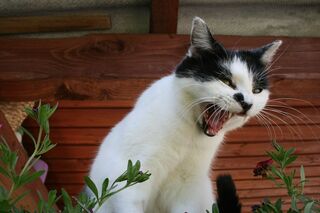
Does nurture or nature matter more when it comes to a cat’s personality? While many people claim that cat breeds differ in personality, there has been little research in the area. Salonen, Vapalahti, Tiira, Maki-Tanila, and Lohi (2019) thus set forth to examine the behaviors of different cat breeds as well as the heritability of their behaviors — that is, the extent to which variation in behaviors are due to genetic variations in the population.
Salonen et al. (2019) surveyed Finnish cat owners on their cats’ behaviors, which included “tendency to seek human contact," “aggressiveness towards human family members, strangers, or other cats," and “shyness towards strangers or novel stimuli." In total, 5,726 cats were studied. The researchers then separated these cats into 19 breeds. The researchers controlled for environmental factors including “weaning age, access to outdoors, presence of other cats,” and general characteristics (sex, age of cat) in their analyses. They identified the breeds corresponding with the 10 following behavioral traits:
1. Aggression Toward (Human) Family Members
- Most aggressive toward family members: Turkish Van and Angora (1st); Korat (2nd); Bengal, House cats (i.e., cats that are not selectively bred), Devon Rex (3rd)
- Least aggressive toward family members: British Shorthair
2. Aggression Toward Strangers
- Most aggressive toward strangers: Turkish Van and Angora (1st); Korat, Devon Rex, Russian Blue (2nd); Burmese and Burmilla, House cats, and Ragdolls (3rd)
- Least aggressive toward strangers: British Shorthair, Persian Cats, Cornish Rex
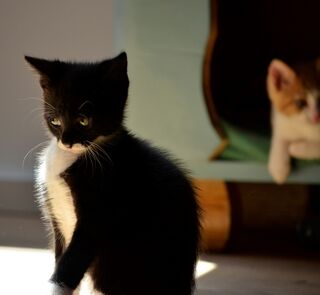
3. Aggression Toward Other Cats
- Most aggressive toward other cats: Turkish Van and Angora (1st); Korat (2nd); Bengal, House cats (3rd)
- Least aggressive toward other cats: Persian (1st); Devon Rex, Maine Coon, Siberian and Neva Masquerade, Ragdoll, Norwegian Forest Cat (2nd)
4. Shyness Toward Strangers
- Most shy toward strangers: Russian Blue (1st); House cat, Bengal (2nd)
- Least shy toward strangers: Burmese and Burmilla (1st); Cornish Rex (2nd); Persian, Abyssinian, Norwegian Forest Cat, Korat, Saint Birman (3rd)
5. Shyness Toward Novel Objects
- Most shy towards novel objects: Russian Blue (1st); House cat, Turkish Van and Angora, Bengal, European Shorthair, Siberian and Neva Masquerade (2nd)
- Least shy towards novel objects: Persian, Cornish Rex (1st)
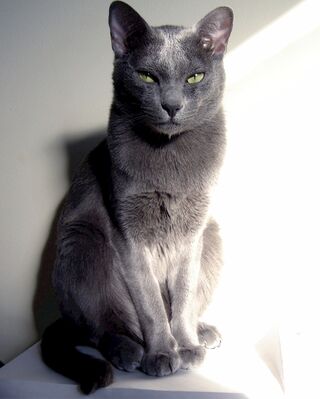
6. Likeliness of Seeking Human Contact
- Most likely to seek human contact: Korat, Devon Rex (1st); Oriental breeds (Balinese, Oriental Longhair, Oriental Shorthair, Seychellois Longhair, Seychellois Shorthair, and Siamese), Abyssinian, Russian Blue, Maine Coone, Cornish Rex (2nd)
- Least likely to seek human contact: British Shorthair (1st); St Birman, European Shorthair, Persian (2nd); Siberian and Neva Masquerade, Ragdoll, Norwegian Forest Cat (3rd)
7. Activity Level
- Most active: Cornish Rex, Korat, Bengal (1st); Abyssinian (2nd); Devon Rex, Oriental breeds, Burmese and Burmilla (3rd)
- Least active: British Shorthair (1st); Ragdoll, Saint Birman (2nd); Siberian and Neva Masquerade, Persian, Norwegian Forest Cat, European Shorthair (3rd)
8. Wool-Sucking Propensity
- Most likely to suck wool: House cat, Norwegian Forest Cat, Turkish Van and Angora, Maine Coon
- Least likely to suck wool: Russian Blue (1st); Persian (2nd); Ragdoll, Cornish Rex, British Shorthair (3rd)
9. Excessive Grooming
- Most likely to groom excessively: Burmese and Burmilla, Oriental breeds
- Least likely to groom excessively: Persian, British Shorthair (1st); Norwegian Forest Cat, Siberian and Neva Masquerade (2nd)
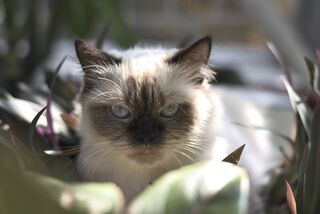
10. Behavioral Problems
- Most likely to have a behavioral problem, according to owners: Oriental breeds, Persian
- Least likely to have a behavioral problem, according to owners: British Shorthair, European Shorthair
Interestingly, house cats (i.e., cats that were not selectively bred) were more aggressive and shyer than purebred cats. The researchers note that such a finding may not be due to genetic differences. Although house cats and purebred cats in the study were similar in their current environment, they could have differed in their early life. Cat breeders may be especially inclined to carefully socialize kittens as they prepare them for sale or for show.
The researchers also found that the heritability of the studied behaviors was moderate, ranging from .40 to .53, which is similar to the previously estimated heritability of behaviors among dogs. This number indicates that approximately half of the variance in cats' behaviors can be attributed to genetic variations in the population. Therefore, nature appears to play a non-trivial role in cats’ personality.
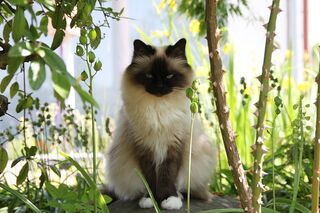
Finally, the researchers identified correlations among both physical and behavioral traits in cats. For example, more sedentary and longer-haired cats were less inclined to seek human contact. The researchers suggest that Ragdoll breeders, for instance, may have chosen to breed calm cats that would be fine with being handled and brushed by humans. Calm cats are also less active and thus may be less inclined to seek human interaction.
Although nature matters, nurture cannot be dismissed. Certainly, the human role in a domestic cats’ disposition is significant in multiple ways, shaping both their genes and environments. There are more questions that should be examined in the future: Just how important is early life nurture in determining an adult cat’s personality? Would these cat breeds show behavioral differences if observed by an unbiased third party instead of the owner? And, how do our stereotypes of cat breeds affect their personalities?
Facebook image: TABITHA FLOESS/Shutterstock
References
Salonen, M., Vapalahti, K., Tiira, K., Mäki-Tanila, A., & Lohi, H. (2019). Breed differences of heritable behaviour traits in cats. Scientific reports, 9, 1-10. doi.org/10.1038/s41598-019-44324-x




